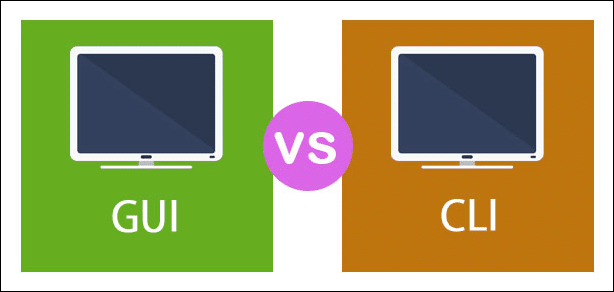Welcome to the ultimate guide on Command Line Interface (CLI) in blockchain! In this guide, we will explore the fundamental concepts and practical applications of CLI in the context of blockchain technology. CLI is a powerful tool enabling users to interact with blockchain networks through a command line or terminal interface. We will delve into various aspects of CLI, including wallet management, transaction handling, and network configuration.
By understanding the intricacies of CLI in blockchain, you will acquire the knowledge and skills required to navigate and interact with blockchain networks efficiently and effectively. Learn all about questions like what is CLI in blockchain, how do command line interfaces work, and the directions of GUI vs. CLI!
Table of Contents
CLI, short for Command Line Interface, plays a vital role in blockchain technology. It refers to a software tool that empowers users to interact with blockchain networks through a command line or terminal interface.
Using specific commands, users can perform various operations such as creating and managing wallets, executing transactions, interacting with smart contracts, and configuring network settings.
CLI provides a flexible and powerful way to engage with blockchain networks, enabling users to control and access the features and functionalities of the blockchain ecosystem. It is a versatile tool for developers, administrators, and users alike, facilitating seamless integration and utilization of blockchain technology.

So, how do command line interfaces work? Command Line Interfaces (CLIs) provide users with a text-based interface to interact with software or systems using specific commands. Users input commands through the command line, and the CLI interprets and executes those commands to perform desired actions.
CLIs often offer a range of functionalities, including managing files and directories, executing programs, configuring settings, and interacting with various system or software components. They enable users to navigate and control a system efficiently through text-based commands, offering flexibility and powerful capabilities for interacting with complex technologies like blockchain.
CLIs offer interactive commands that allow users to engage with a system or software through real-time input and response. These commands prompt users for specific inputs, and based on the provided information, the CLI carries out corresponding actions.
Interactive commands are useful for configuring settings, initiating processes, or requesting user input during runtime. They enhance the usability of CLIs by facilitating dynamic and responsive interactions between users and the system or software.
Command Line Interfaces enable users to deploy and upgrade smart contracts on a blockchain network. Users can compile their contract code, specify deployment parameters, and initiate the deployment process by utilizing specific commands.
CLIs also provide mechanisms for contract upgrading, allowing users to update their existing contracts and deploy newer versions while preserving data and functionality.
CLIs can link Ethereum packages, enabling users to incorporate external smart contract libraries and dependencies into their projects. Through linking commands, users can specify the package they wish to include, and the CLI handles the integration, making the library’s functionality available for use within the project.
This allows developers to leverage existing code and libraries, promoting code reuse and enhancing the efficiency of smart contract development.
With CLIs, developers can bootstrap their decentralized applications (dapps) by generating a basic project structure, setting up necessary configurations, and initializing key components. CLI commands can create initial files, configure project settings, and provide a foundation for dapp development.
By using bootstrap commands, developers can save time and effort in setting up the initial scaffolding of their dapp projects, allowing them to focus on implementing their decentralized applications’ core functionalities and logic.

Using a Command Line Interface (CLI) offers several advantages in various contexts, including blockchain technology.
CLI commands allow for quick execution of tasks, as users can directly input commands and parameters without the need for graphical interfaces. This streamlined approach eliminates the need for navigating through menus and graphical elements, enabling faster interactions and increased productivity.
CLIs are often lightweight and consume fewer system resources than graphical user interfaces (GUIs). This efficiency makes them suitable for resource-constrained environments, allowing users to perform tasks without excessive memory or processing power requirements.
CLIs excel in automating repetitive tasks through scripts or batch processing. By creating scripts encompassing a series of commands, users can automate complex workflows and execute them repeatedly, saving time and effort.
CLIs cater to power users who prefer fine-grained control and flexibility. With CLI, users have precise command-level control over system configurations, network interactions, and development processes. This level of granularity empowers advanced users to optimize and customize their workflows according to their specific needs.

There are several distinctions of GUI vs. CLI. The reasons as to why a Command Line Interface (CLI) might be preferred over a Graphical User Interface (GUI) might be:
CLIs typically have lower resource requirements than GUIs, making them suitable for resource-constrained environments. They consume fewer system resources, such as memory and processing power, allowing for efficient operation even on devices with limited capabilities.
CLIs offer precise control and fine-grained customization options. Users can execute commands with specific parameters, enabling high precision and the ability to tailor actions to their requirements. This level of control is particularly beneficial for advanced users who require intricate configurations and interactions.
CLIs are well-suited for automating repetitive tasks. Users can create scripts or batch processes that encapsulate a series of commands, allowing for efficient execution of repetitive workflows. This saves time and effort by eradicating the need to perform the same tasks repeatedly and manually.
CLIs provide powerful capabilities, enabling users to access and control advanced features and functionalities. They often offer more commands and options than GUIs, allowing for complex operations, system configurations, and integration with other tools. This power-user aspect of CLIs appeals to individuals who require extensive control and advanced functionalities in their workflows.
In conclusion, Command Line Interfaces (CLIs) play a crucial role in blockchain technology and offer numerous benefits over Graphical User Interfaces (GUIs). CLIs provide a streamlined and efficient means of interacting with blockchain networks, allowing for the quick execution of commands and tasks. They consume fewer system resources, making them suitable for resource-constrained environments.
CLIs offer high precision and customization options, empowering users with fine-grained control over configurations and interactions. They are well-suited for automating repetitive tasks through scripting, saving time and effort. Moreover, CLIs provide powerful capabilities and cater to power users who require advanced functionalities and control. By leveraging the advantages of CLIs, users can enhance their efficiency and effectiveness in working with blockchain technology.
Open your system’s command prompt or terminal interface to use CLI commands. Then, type the specific command followed by any required parameters or options. Press enter to execute the command. Consult the documentation or help resources for the specific CLI tool or software you use to learn about available commands and their usage.
The command line offers several advantages. It allows for faster execution of tasks, consumes fewer system resources, provides precise control over configurations and interactions, and is well-suited for automating repetitive tasks. Additionally, the command line is often favored by power users who require advanced functionalities and customization options in their workflows.
Linux CLI refers to the Command Line Interface provided by the Linux operating system. It allows users to interact with the Linux system through a text-based interface, executing commands to perform various tasks such as managing files, configuring settings, running programs, and administering the system. The Linux CLI provides a powerful and flexible environment for users to control and utilize the features of the Linux operating system.
Physical Layer in OSI Model | Advantages and Disadvantages of Decentralization | Ordinals NFTs | What are EVM Compatible Blockchains | Best Decentralized Storage Networks | What is Consortium Blockchain | Layer 1 Blockchain | Web3 Events | POAP | Blockchain Validator | Github Vs Gitlab | Linear Scalability | Latency Throughput Blockchain | Blockchain Validator | Decentralized Social Media | Blockchain API | 51% Attack | Throughput Vs Bandwidth | Bitcoin Layer 2 | Crypto Hacks | Crypto Mining Platforms | What is Intrinsic Value | Types of DDos Attack | What is AMM in Crypto | What are Soulbound Tokens